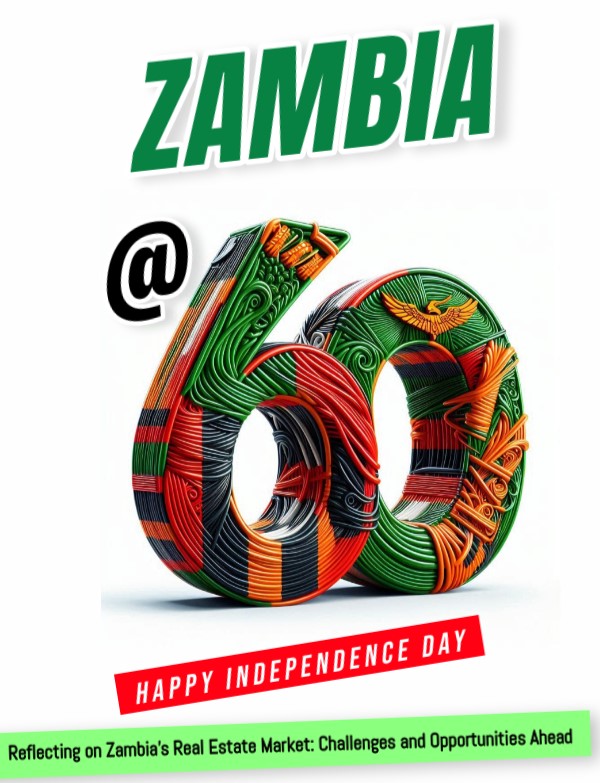Zambia gained independence from British colonial rule on October 24, 1964. The country’s first president was Kenneth Kaunda, who led the nation in the post-colonial period and held power for 27 years. Zambia has a rich history influenced by various ethnic groups, colonialism, and the struggle for independence.
Zambia is a landlocked country in southern Africa. It is bordered by eight countries: Tanzania to the northeast, Malawi to the east, Mozambique to the southeast, Zimbabwe to the south, Botswana and Namibia to the southwest, Angola to the west, and the Democratic Republic of the Congo to the north. Zambia is known for its diverse wildlife, rich natural resources, and significant cultural heritage.
General Information
Official Name: Republic of Zambia
Capital: Lusaka
Official Language: English
Currency: Zambian kwacha (ZMW)
Population: 19,693,423 (2022 Population) �
Area: 752,612 square kilometers (290,586 square miles)
Economy
GDP Growth Rate: 5.2%
Annual Inflation Rate: 15.4% �
Employment Rate: 31.5% �
Major Industries: Mining (particularly copper and cobalt), agriculture, tourism, and manufacturing. �
Key Exports: Copper, cobalt, tobacco, flowers, and gemstones.
Zambia’s Real Estate Challenges
1. Economic Instability: Zambia has faced various economic challenges, including fluctuating commodity prices, inflation, and high public debt. Such economic instability can deter investment in real estate and affect property values.
2. Infrastructure Deficiencies: While urban areasare growing, many rural regions still lack necessary infrastructure. Poor roads, inadequate public transport, and inconsistent utilities can make it challenging to develop real estate projects.
3. Access to Financing: Many potential homeowners and investors face difficulties accessing affordable financing options. High interest rates and stringent lending criteria can limit investment in both residential and commercial properties.
4. Regulatory and Bureaucratic Hurdles: The real estate industry oftengrapples with bureaucratic inefficiencies, lengthy permit processes, and inconsistentenforcement of regulations, which can slow down development projects and deter foreign investment.
5. Land Tenure Issues: Land ownership in Zambia can be complex, with a dual system of customary and statutory land tenure. This can lead to disputes and uncertainty, making real estate investments riskier.
6. Urbanization Pressure: Rapid urbanization has led to an influx of people into cities, creating pressure on the housing supply. This can result in informal settlements and increased demand for affordable housing.
Zambia’s Real Estate Opportunities
- Residential Real Estate
- Affordable Housing: With a growing urban population, there is a high demand for affordable housing, particularly in urban centers like Lusaka and Ndola. Investing inthe development of low- to mid-cost housing can cater to the large segment of the population seeking such options.
- Luxury Housing Market: As the middle class expands, there is also demand for luxury apartments and gated communities, particularly among expatriates and affluent Zambians.
2. Commercial Real Estate
- Office Spaces: As businesses expand, there is a need for modern office spaces. Investing in office buildings or co-working spaces can be lucrative, particularly in urban areas.
- Retail Developments: Shopping malls and retail centers areincreasingly in demand, driven by growing consumer spending.There are opportunities in both large malls and smaller retail formats.
3. Industrial Real Estate
- Warehousing and Logistics: The growth of e-commerce and trade in Zambia has created a demand for warehouses and distribution centers. Investing in logistics parks can be beneficial, given Zambia’s strategic location in the Southern African region.
4. Tourism and Hospitality
- Hotels and Lodges: Zambia is known for its natural beauty and national parks. Investing in tourism infrastructure, like hotels, lodges, and eco-tourism resorts, can yield good returns, especially in areas near key attractions like Victoria Falls and South Luangwa National Park.
- Vacation Rentals: The rise in international travel and local tourism creates opportunities for vacation rentals, particularly in tourist-heavy areas.
5. Mixed-Use Developments
- Combining residential, commercial, and recreational facilities in one development can attract diverse tenants and buyers, making it an attractive investment strategy.
- Agricultural land and development into residential or commercial spaces: Zambia has significant agricultural potential, and land investment canalso lead to future development opportunities as urban areas expand.
6. Government Initiatives
- The Zambian government has various initiatives aimed at promoting housing development, particularly through partnerships with private investors, as well as special economic zones that can provide favorable investment conditions.
Conclusion
Zambia’s real estate market at 60 presents a mix of challenges and opportunities. The nation stands at a crossroads, with the potential for growth driven by a changing demographic, government support, and a focus on sustainable development.
Strategic planning, investment, and cooperation among stakeholders will be essential to overcoming the challenges and harnessing the opportunities ahead,ultimatelycontributing to the country’s economic development andimproving the quality of life for its citizens.

